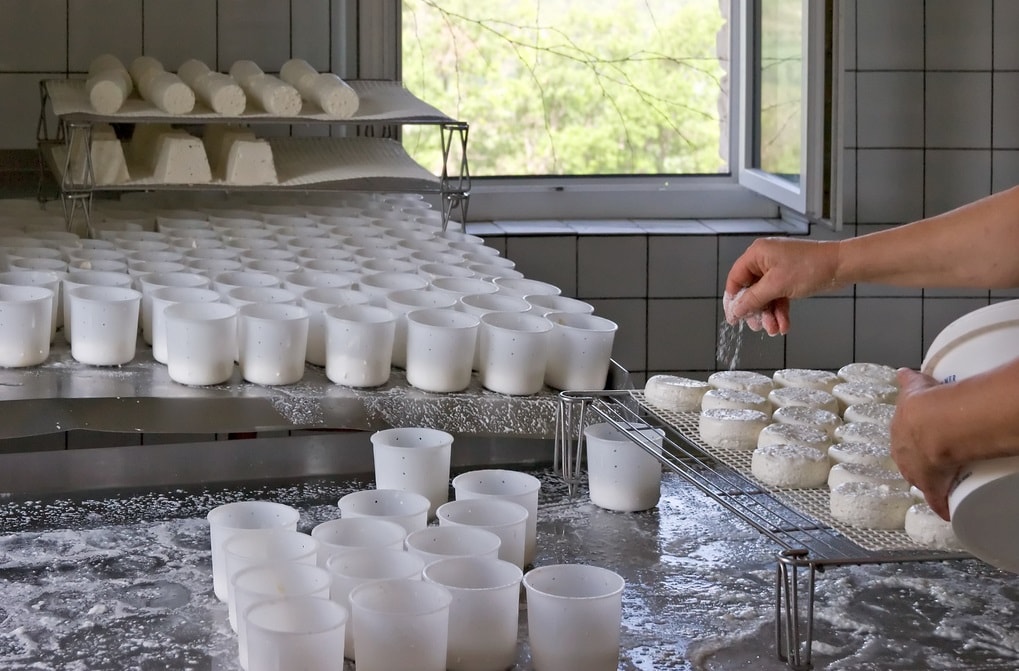
After many hours of draining, the cheese is removed from the mould and then left on a warm, ventilated drying rack, where it is then salted.
The cheese can be salted in two ways. It can be either sprinkled with fine salt, or it can immersed in a bath of brine.
- The salting of the soft cheese is done within the 24 hours after it has been removed from its mould
- For cooked and uncooked pressed cheese, the salting is slow and progressive, so that the cheese will be able to be matured for longer.
The salting of the cheese is a stage which has an effect on the flavour of the cheese. The salt plays an important role in that it:
- gives the aspect of the cheese and a large part of the aroma
- solidifies the rind, allowing the cheese to keep its shape
- has a regulatory effect between the pate and the atmosphere
- naturally conserves the cheese, allowing for longer conservation
- has properties which permits the cheese to fight off microbes and bacteria.
Fresh cheese and small cheese are made from natural lactic fermentation which privileges the biological character to the cheese. Cooked cheeses are made mechanically, using the methods described above, in order to obtain a harder, larger cheese.
The salting of the cheese is the fourth stage and it is carried out by the cheese dairy.